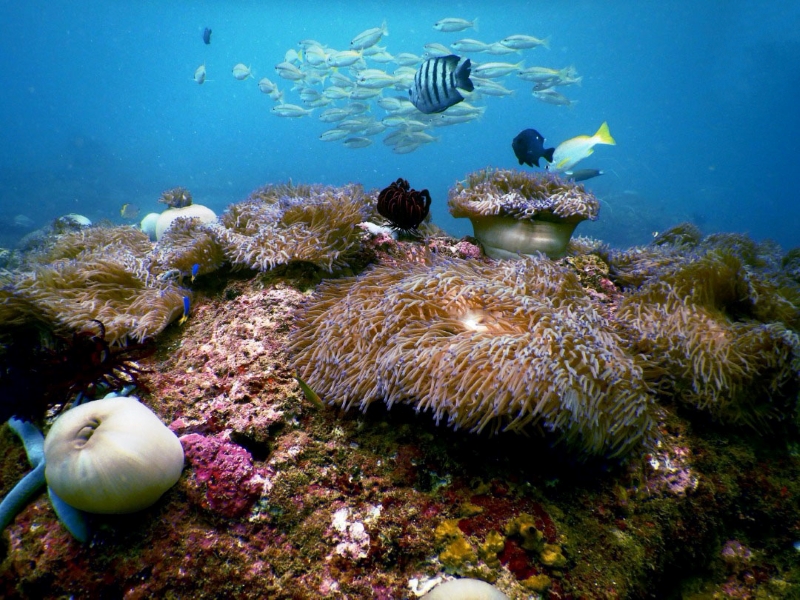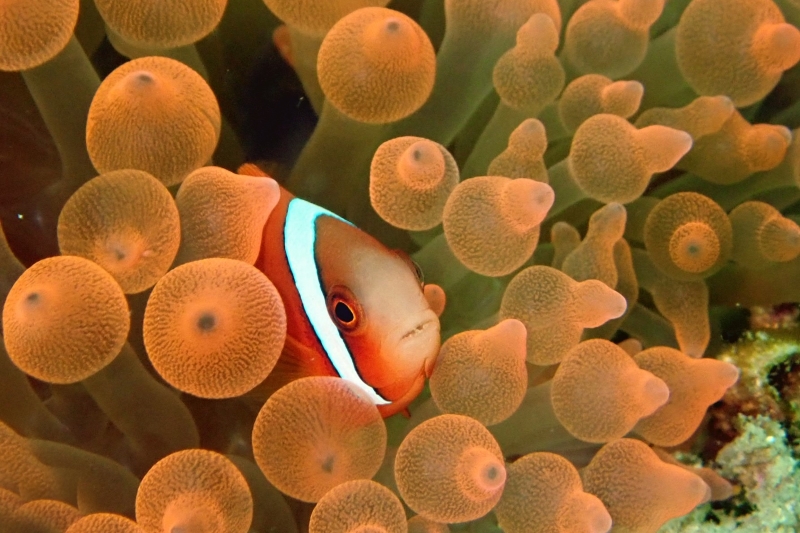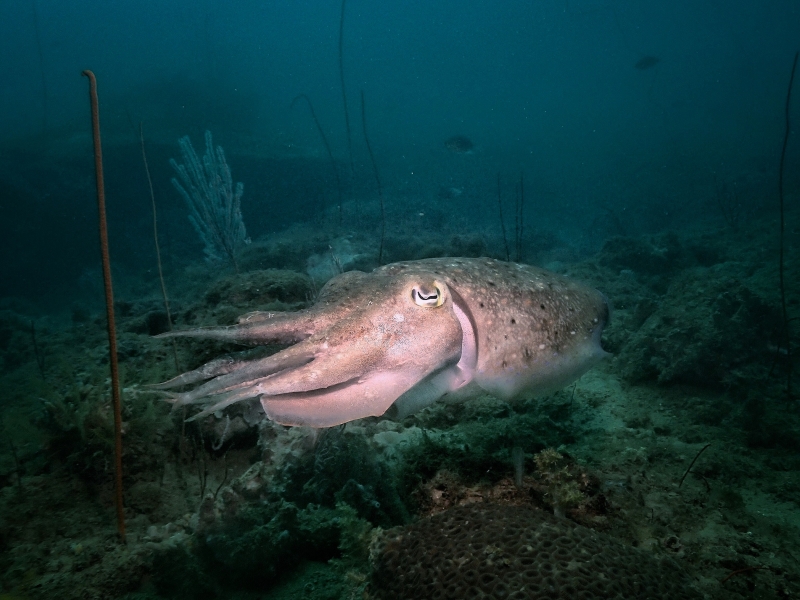
Miri’s dive sites boast excellent flora and fauna composition (All photos: Miri Divers)
For the vast majority of Malaysians, their knowledge of Miri — a coastal city in the northeast of Sarawak, the state’s second-largest — is often limited to a vague connection with oil and gas production.
Fair enough; after all, it is the birthplace of Malaysia’s multibillion-dollar petroleum industry. But the natural resources, or wonders, as one would come to discover, do not end there.
When oil seepages were first discovered on a limestone ridge during the rule of Rajah Charles Brooke, a geologist from Shell was sent to investigate. In 1910, the first well was drilled atop Canada Hill (named after the Canadian engineers and drillers who were working there) and the black gold that flowed indicated the start of a prosperous new chapter for the sleepy fishing village.
WW II put a damper on production as the Japanese began their assault on Miri. Soon after receiving news about Pearl Harbour, the engineers were ordered to undertake scorched earth procedures to prevent the natural resource from falling into enemy hands. Miri suffered immense infrastructure destruction from the Allied forces’ bombings, but after post-war reconstruction, it was business as usual — although this time, production was brought offshore. These wells were far more successful and yielded greater commercial accumulations. Large reserves of natural gas were also discovered. Thus, offshore drilling has remained the principal method of extraction until today.
copy_of_img-20200414-wa0059_-_copy1.jpg

One cannot be blamed for assuming the worst for marine wildlife because of this, but oil and gas activities are fairly controlled. In fact, rumour has it that Shell and Petronas staff tasked with marine and seismic surveys were the ones who “discovered” the lush coral gardens teeming with sea creatures off the coast of Miri. Take it with a pinch of salt, though — they may be the ones who pinned the locations on the map for modern recreational diving but remember, Miri is also home to the Sea Dayaks, maritime experts (and headhunters) who know the ocean like the back of their hands.
The lack of nearby islands — easy indicators of a potential underwater exploration spot — may be another reason Miri’s dive sites are often perceived as rather hidden gems. This is terrific news in terms of conservation, of course. If you get the chance to explore the treasure trove of pristine patch reefs within the Miri-Sibuti Coral Reefs National Park — declared almost 20 years ago — you would want to keep it a secret as well.
Visibility is impressive at the 186,930ha marine park, averaging between 10m and 30m. According to Jimmy Yong, founder of Miri Divers, a local dive operator that also offers certification programmes, the best time to go is from April to June and August to September when there is a lower risk of bad weather. There are over 20 sites to discover — with depths ranging from 7m to 30m — at the marine park, which stretch all the way down to Niah town.
Yong plotted out four locations for our party to explore across two mornings. The closest reef, about a 20-minute boat ride from the Marina Bay Jetty, is Eve’s Garden. Upon reaching our stop, we quickly realised the strength of the surface current. Yong says dives are often challenging because of it, but those who remain in the boat will no doubt have a harder time. The strongest motion sickness pills are a must for those who get queasy easily.
nemo_miri_diver.jpg

But all is well after the Buoyancy Control Device is deflated and a slow descent drowns out the harsh waves and surface noise. Finally, nothing but serene underwater silence.
Despite being one of the shallowest dive sites at 7m, Eve’s Garden is densely carpeted by dancing anemones among which clownfish take cover. Fans of macro marine photography will have an opportunity to tail critters both wonderful and weird along the cushy leather corals, elephant ear sea sponges and sea whips that abound in this area. The temperature is a warm 29°C to 30°C, with occasional pockets of cold — but not freezing — water brought on by changing currents that keep divers alert. Schools of yellowtail fusiliers and angelfish observe visitors from a distance while a large bumphead the size of a TV curiously swims by. It is no wonder Eve’s Garden is a favourite among even the most experienced divers.
A quick oxygen replacement on board and we are off to the second stop. One of the most interesting reefs, Anemone Garden, boasts excellent flora and fauna composition and splendid diversity. As the name suggests, the symbiotic clownfish are naturally in abundance here. A textured scene of bubble, staghorn and carnation corals frame swaying feather stars and giant clams. If you have the eyes of a hawk and the patience of a saint, you may be able to spot a nudibranch. Sea turtles can be found here too, but they are rather shy, unlike the reptiles on Redang Island who are used to humans. Our dive culminated with a wonderful encounter of two octopi linking arms and taking a stroll (unless they were mating and in that case, apologies for the intrusion).
inshot_20240427_230857550.jpg

The next day, we explored Sunday Reef and Nemo City, which are close by each other. As though in performance, shoals of silvery yellowback fusiliers rained down, regrouped and ribboned the reef in mesmerising synchronicity. At Sunday Reef, we were treated to a surprise visit by a poseur cuttlefish showing off its transformative skills by exposing rings of reflective pigment across its body. Later at Nemo City, we were greeted with the most beautiful landscape, with wide sea fans spreading proudly over the colourful anemones, feather stars and carnation corals. A school of arrow-sharp barracuda zipped in and out of the area in a flash.
These are only a handful of the many dive sites within the marine national park. Advanced and adventurous divers can explore the Kenyalang Wrecks, a decommissioned oil rig frequented by groupers and sea snakes, or Santak Point to swim alongside a fever of stingrays. Marble rays and leopard sharks have been spotted in Siwa Reef and there is also a sunken Japanese WW II ship at Atago Maru, where large moray eels, jacks and barracudas haunt.
All that is to say Miri may be a lesser-known place for diving, but it is certainly one worth travelling for. Besides, if adventure is what you seek, the city is also the main gateway to the world-renowned Gunung Mulu National Park, a Unesco World Heritage Site; Niah National Park, where the oldest human settlement was recorded; and the Kelabit Highlands, venue of the Bario Food Festival. From the mountains to the sea, Miri is, quite frankly, the place to be.
This article first appeared on May 27, 2024 in The Edge Malaysia.


